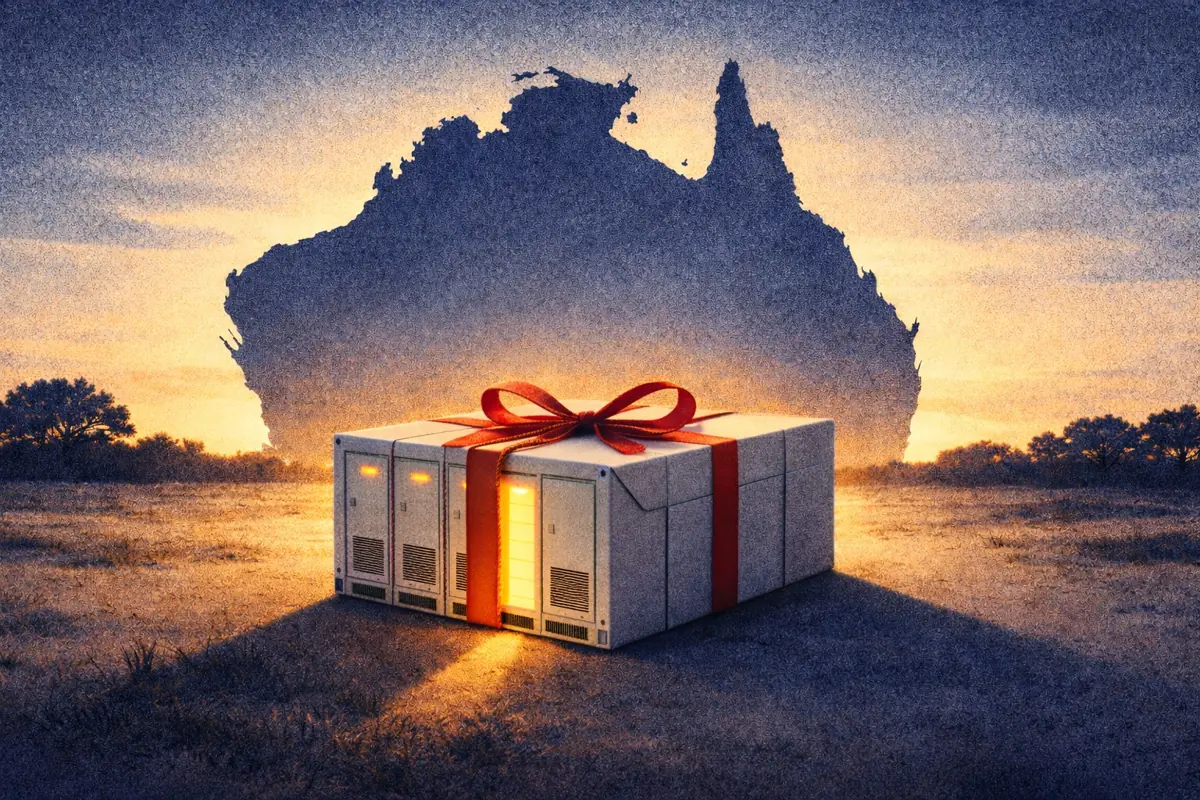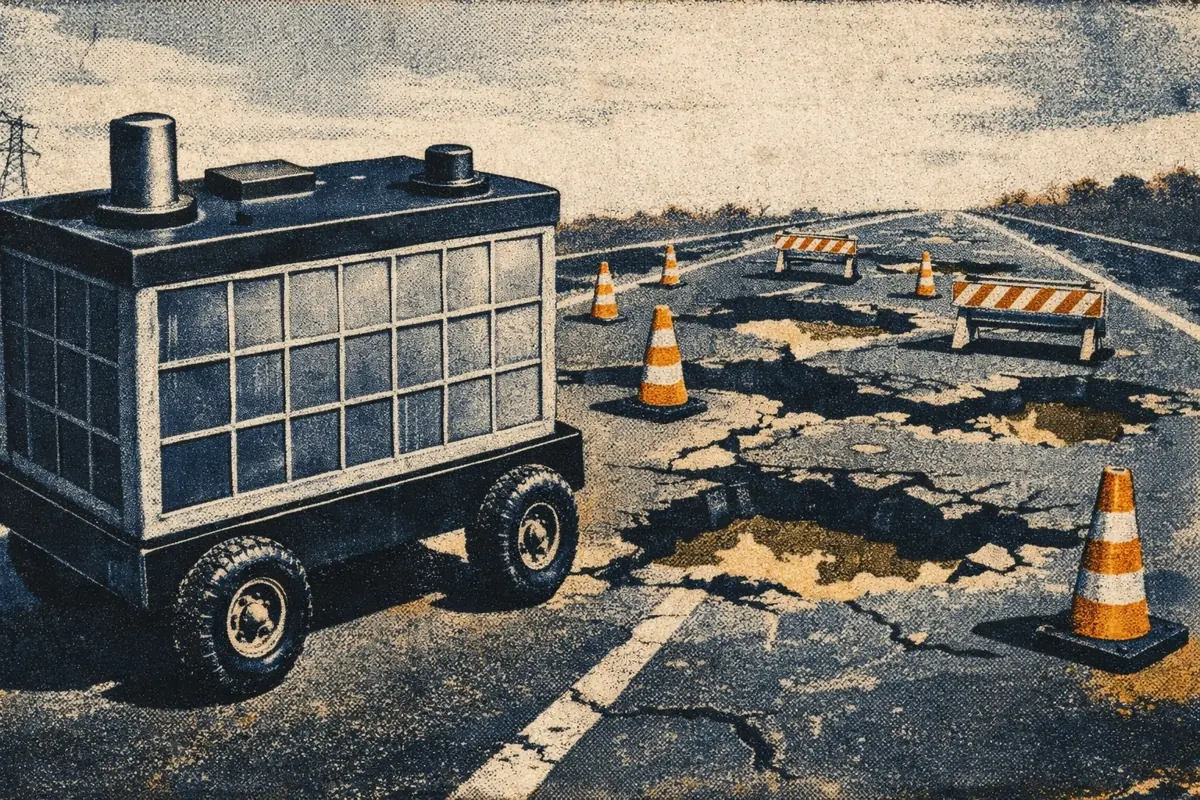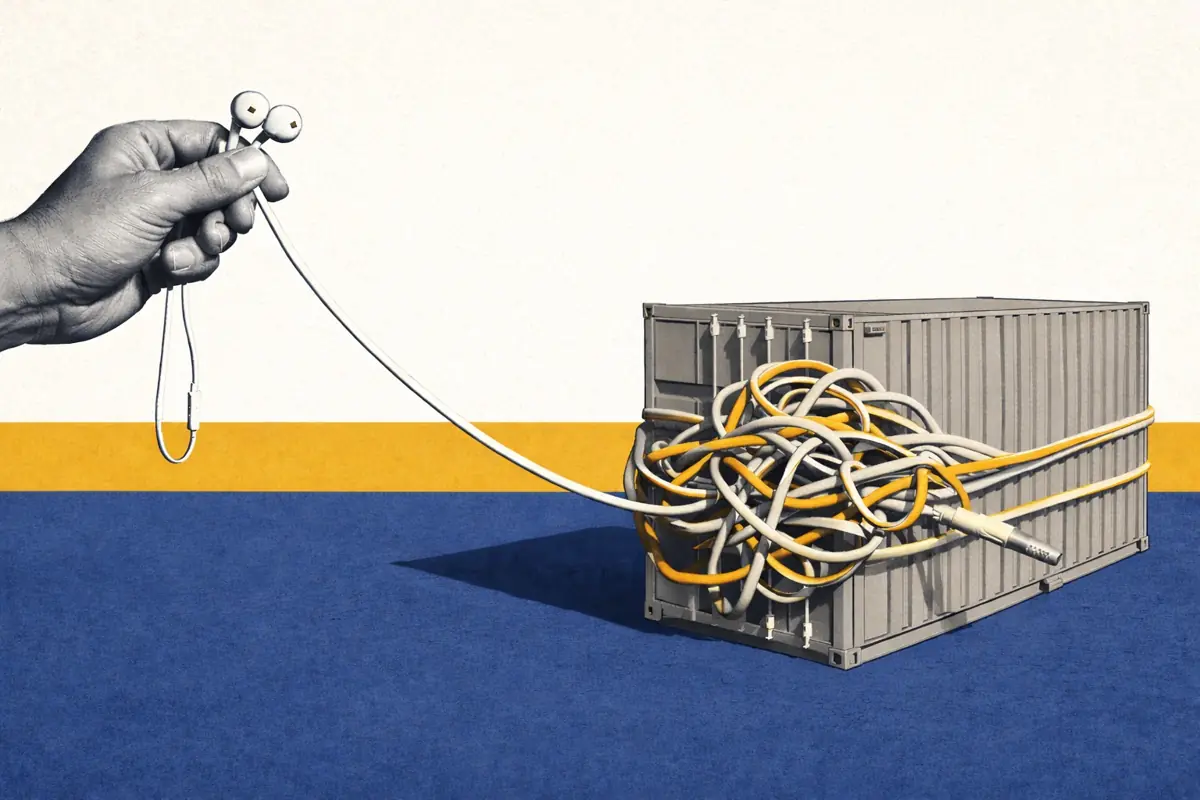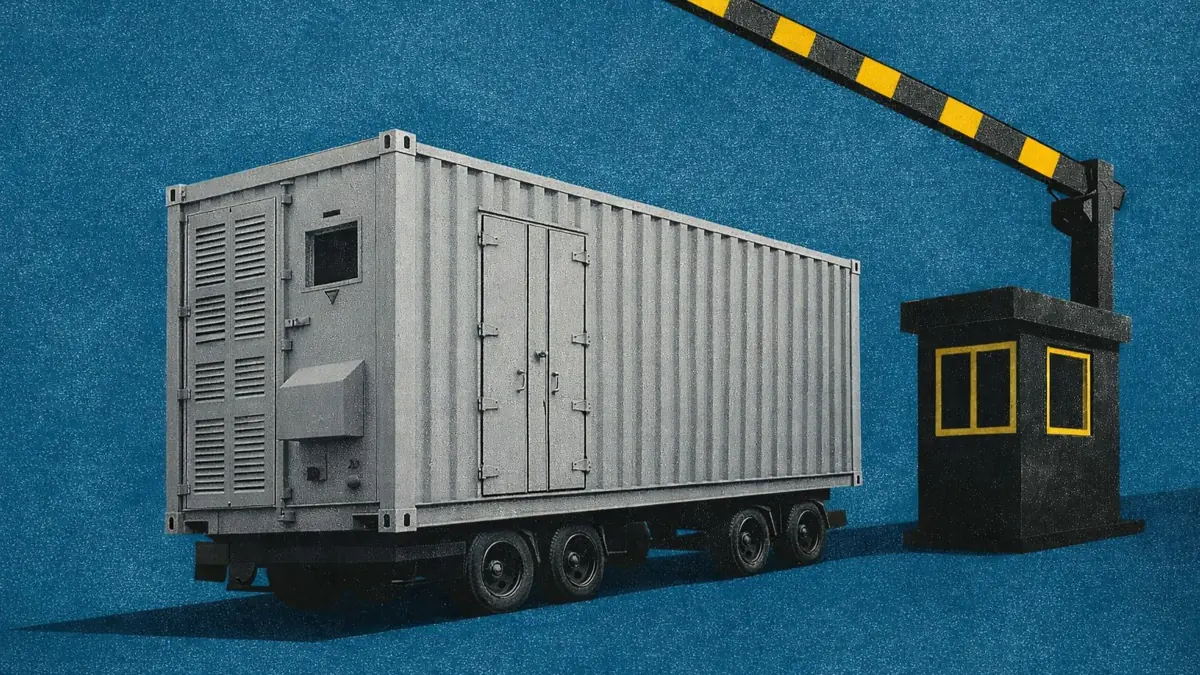Inertia (and rate of change of frequency): an introduction
What is inertia?
In everyday terms, inertia just means a tendency to remain unchanged. When people talk about being overcome by a feeling of inertia, they usually mean that they’re stuck in a rut, or going through the motions. In physics, inertia is the resistance to a change in velocity. You know how a hamster wheel continues to spin even after the hamster stops running? That’s inertia.

So how does this apply to energy? Lots of traditional generators (coal- and gas-powered stations, as well as nuclear plants) employ spinning parts - e.g. turbines and generators - to produce power. These parts spin at a frequency to match and support the frequency of the electricity system (50 Hz). When a generator loses power, these moving parts want to keep spinning at the same frequency. (A generator spins to produce power. If it's losing power, then it'll also likely be spinning less.) The kinetic energy stored in these spinning parts is called ‘inertia’.
Inertia helps National Grid ESO maintain grid frequency at around 50 Hz. When there’s a frequency deviation, rate of change of frequency (RoCoF) increases. (Rate of change of frequency refers to the speed of deviation in frequency - and it’s measured in Hz/second. It essentially tells us how robust the grid is at any given time.) Inertia helps to slow RoCoF.
When a generator loses power, there is generally a four- or five-second window during which those spinning parts produce inertia. However, those few seconds allow the mechanical systems of the grid to detect the imbalance (via increased RoCoF) and tell generators to speed up or slow down. In the ESO’s own words, “inertia behaves a bit like the shock absorbers in your car’s suspension.”
Decreasing inertia
As we move away from traditional sources of generation (such as those mentioned above), and toward renewables, system inertia drops. This is because renewables - specifically wind and solar - do not produce inertia*. Figure 1 (below) shows how average system inertia decreased from 2008 to 2019.
* You might be wondering why wind turbines don’t produce inertia. It’s because the power wind turbines generate needs to go through an inverter before it can be passed onto the system. To contribute to inertia, there must be a direct electromagnetic coupling between plant and power system. This allows deviations to be translated into mechanical torque.

As the graph above shows, there are times when inertia is likely to be higher or lower. When overall system demand is low, such as during the summer minimum, renewable (zero-inertia) generation is able to meet a large proportion of said demand. Therefore, low inertia occurs at times of low demand and high renewable output.
When overall system demand is high, such as during the winter peak, more generation is needed. Renewable (zero-inertia) generation is unable to meet such a large proportion of demand, and so other fuel types - such as traditional, inertia-producing plants - need to be called upon. Therefore, high inertia occurs at times of high demand and low renewable output.
Figure 2 (below) shows the correlation between demand and inertia. It also reinforces the overall decrease in inertia since 2009.

How is this affecting grid frequency?
With the increasing penetration of intermittent renewables, and the decrease in inertia, frequency volatility has increased. Courtesy of some excellent analysis from Grecia Monsalve, we can see that the number of low-frequency events (defined as times when system frequency drops by >0.3 Hz), and the lengths of these events, increased significantly from 2014 to 2020. Figure 3 (below) shows the graphs from that article.

What’s the alternative?
Lower inertia means that National Grid ESO needs to find other ways to slow RoCoF when frequency deviations occur. One way that it does this is through its range of frequency response services. Dynamic Containment (DC) is a fast-acting, post-fault service. When frequency moves outside of operational limits (±0.2 Hz), the ESO calls upon its DC participants - battery energy storage systems (BESS) - to act, moving frequency back towards 50 Hz.
The need for low-frequency Dynamic Containment (DCL) is largely dependent on the amount of inertia on the system at any given time. At times of low inertia, meaning a larger chance of a RoCoF event, DCL requirement is generally higher. We can see this in figure 4 (below), taken from our recent research piece on DC prices.

However, procuring frequency response comes at a significant cost to the ESO. (Of course, many would argue that the cost is worth it, given that it keeps the lights on and comes with the added benefit of helping to displace traditional thermal power.) Figure 5 (below) shows the rising cost of RoCoF management. While these figures could encompass a number of different projects, it’s fair to assume - based on the numbers shown - that the bulk of these costs goes towards procuring frequency response services (if they include Mandatory Frequency Response). The cost of managing RoCoF, then, increased roughly tenfold in the five years from 2017 to 2021.

How else is the ESO replacing inertia?
On top of its frequency response services, the ESO is also looking at other, clean methods of providing system inertia. Through its stability pathfinders, it is funding the repurposing of redundant steam generators and gas-fired power stations. On top of this, it is also supporting new-build synchronous compensation units, and purpose-built green turbines. For more information on these projects, head here and here.
In the video below, you can see a timelapse of Statkraft’s green turbine project at Keith Greener Grid Park in Moray, Scotland.
Further reading on how the ESO measures system inertia can be found here.
As ever, we’d love to hear your thoughts on this article. If you’ve got any questions, or anything you’d like to add to the conversation, just leave a comment below.







